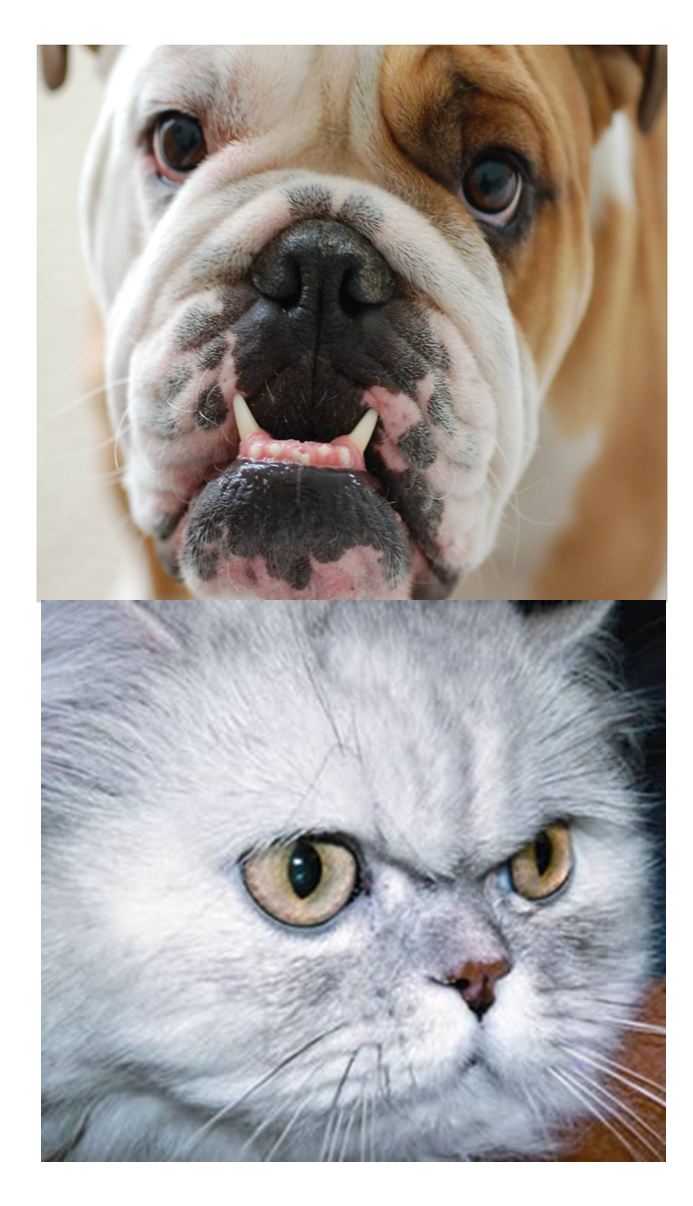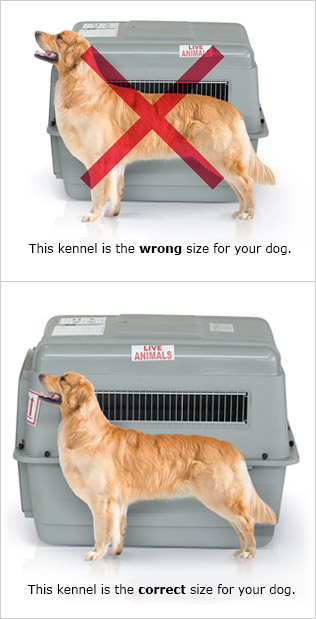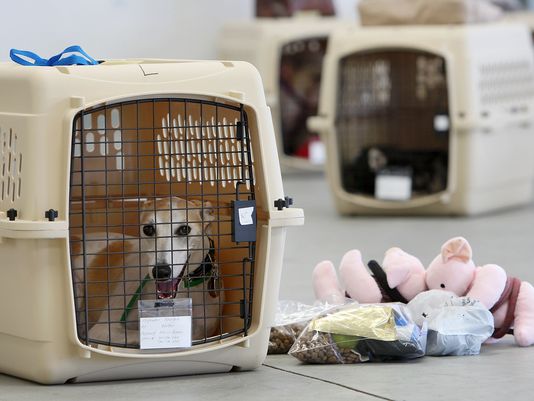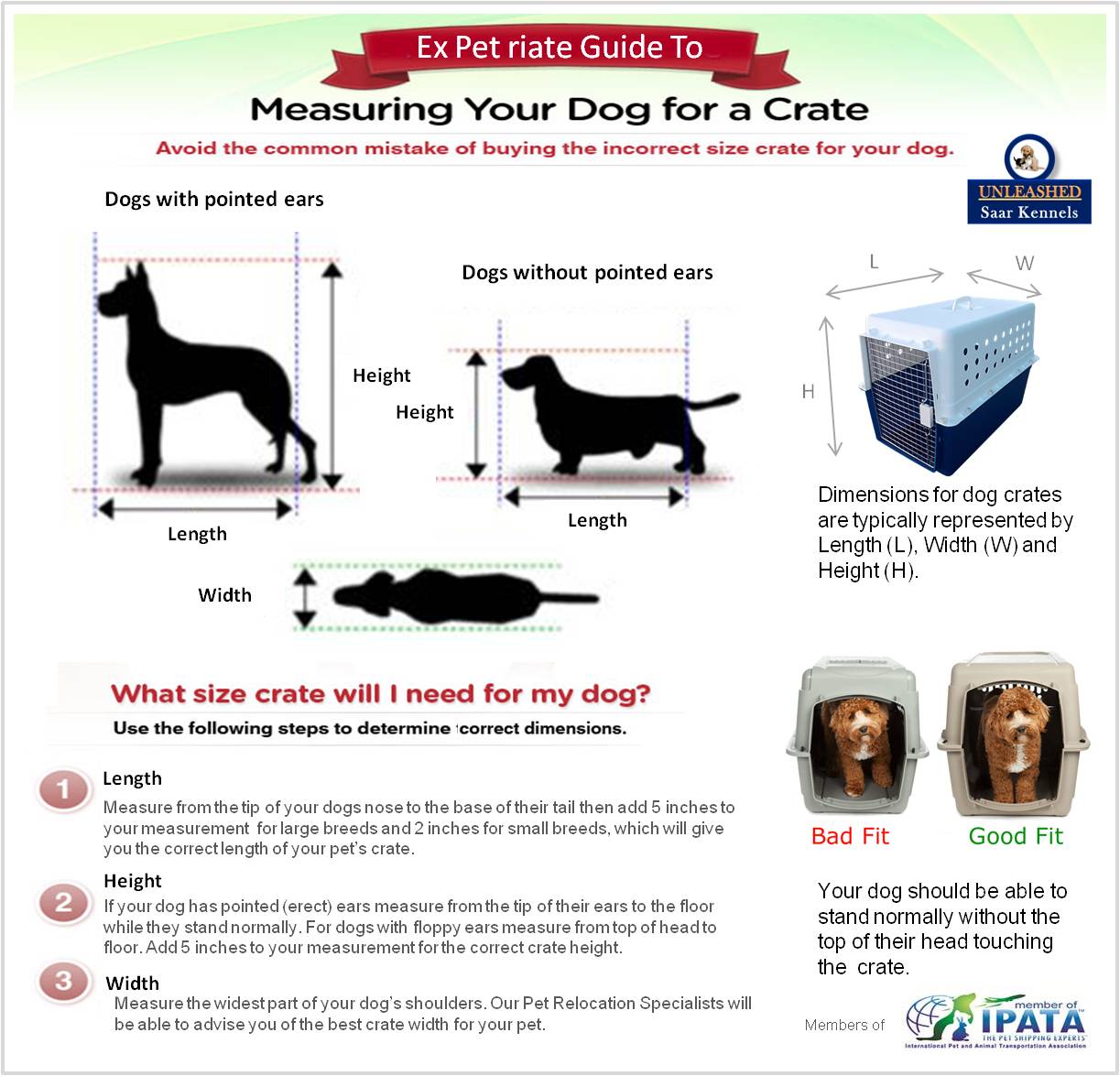When deciding to purchase travel crate to ensure your pet has a safe journey, it is best to take the time to measure your pet to make sure they will fit comfortably in it.
When relocating your pet to a new country, both airlines and pet travel associations such as IATA (International Animal Transport Association) have specific regulations as to what type and size of crate you should purchase for your pet’s travel. Although airlines and the IATA association do not endorse any particular brands of crate manufacturers, they have tested and found that certain types of crates such as hard durable plastic crates without wheels provide the safest means of transport for a live animal. Certain brands such as Sky Kennel and Sky Vari Kennel are acceptable types of crate brands to purchase, but in order to choose the right size for your pet, there are a few factors to consider.
The rule of thumb when purchasing a travel crate for your pet is to make sure it has no wheels, is an approved IATA brand, has ventilation on all four sides (3 sides with holes or metal grating + the door), and not only can your pet stand erect without their head touching the top of their crate, but also that your pet can comfortably sit, turn around and lie down in their crate.
Cats and miniature dogs
If you have a miniature dog or a cat, on some airlines you may be able to ship your pet using the smallest Sky Vari Kennel of 21L by 16W by 15H inches. However most airlines have changed their regulations and only allow small pets to travel in the 2nd smallest crate which is the 28L by 20.5W by 21.5H inch crate (the next size up), as this provides a sturdier larger crate allowing enough air to circulate around your pet during their flight.
Snub nosed breed pets
For owners with pet’s with short noses such as persian cats, or dog breeds like pugs, bulldogs and shih tzus they are classified as brachycephalic breeds (snub nosed), special preparation for travel need to be made. As snub nosed breeds of pets have shorter nasal passages and facial bone structure to other pet’s they regularly encounter breathing problems causing them to overheat easily, and which make it more difficult for them to inhale air than other breeds, which is why airlines have restrictions on their travel. Some airlines will not accept to transport these types of pets, whereas other airlines will accommodate them only if they travel in a larger crate which allows enough air to circulate around the pet during their flight. So when selecting a crate for this type of pet you will need to select the next size up, or consult our pet relocation specialists to ensure you are buying the right size crate for your snub nosed pet.
To check if your pet is considered a brachycephalic breed have a look at this link: Click Here
 Large dog breeds
Large dog breeds
Pet owners with large and tall dogs, such as great danes, belgian malinois, and certain large breed german shepherds need to purchase special crates for their pets as airlines have strict regulations that prohibit a dog’s head from touching the top of their crate. Once you measure your pet you will be able to compare their height with the largest IATA approved travel crate available in Bahrain which is the one measuring 48L by 32W by 35H inches, which is appropriately named the ‘Giant’ size crate. If you find your pet’s height is 33 inches or more then our pet relocation specialist will advise you of two options, either you will have to purchase an extension for your pet’s crate that will extend the height of your pet’s crate about 4-5 inches, or your pet will have to have a special wooden crate made for your big and beautiful pet. Our pet relocation specialist will be able to organise this on your behalf, and if you are unsure it is always best to ask our experts before purchasing expensive travel crates.
Measuring your pet
Rule of thumb is make sure your pet is standing normally with their head up, using a tape measure you can easily check your pet’s height width and length as we show in the diagram above.
For dog owners with dogs with erect ears (ears that stand up) you will have to measure your pet’s height all the way to the tip of their ears. If you have a dog with floppy ears then you will only have to measure to the top of their head. The idea is you want your pet to be able to stand normally in their crate without their ears or head touching the top of their crate, so they can comfortably stand up.
You definitely want to make sure your pet can easily turn around in their crate and lay down, that is why you measure their width and height. Rule of thumb is for heavier (over weight) or broad dogs you may end up needing a larger crate so they can move turn around and lie down comfortably. If you are unsure it may be best to leave it to our pet relocation specialists, as their years of experience shipping all types and sizes of pet will allow them to know which size is best for your dog.
The length of your pet’s crate is equally important, they should be able to sit down in their crate without their face or paws being pushed against the door of their crate. So one of the tricks of the trade is to measure from the tip of your pet’s nose to the base of their tail and add 6 inches to that measurement so your pet will be able to comfortably sit lie down and turn around in their crate.
Travel is usually quite frightening for pet’s as they do not comprehend what is going on, where they are being taken, and why they are being removed from their comfortable environment. However there are a couple of ways to provide your pet with some comfort before and during their travel. If you start by purchasing the right size crate for your pet making sure they can comfortably fit in it is the first step, next you can take time before travel to crate train your pet so they will see their crate as a safe and comforting place which they will tolerate being confined to. At some destinations you may be allowed to include your pet’s favorite blanket or bed with them in their crate, to check if this is possible it is best to contact our pet relocation specialists who will advise you of the latest regulations at your pet’s destination.
For more information on crate training check out our How to Crate train your pet article.



